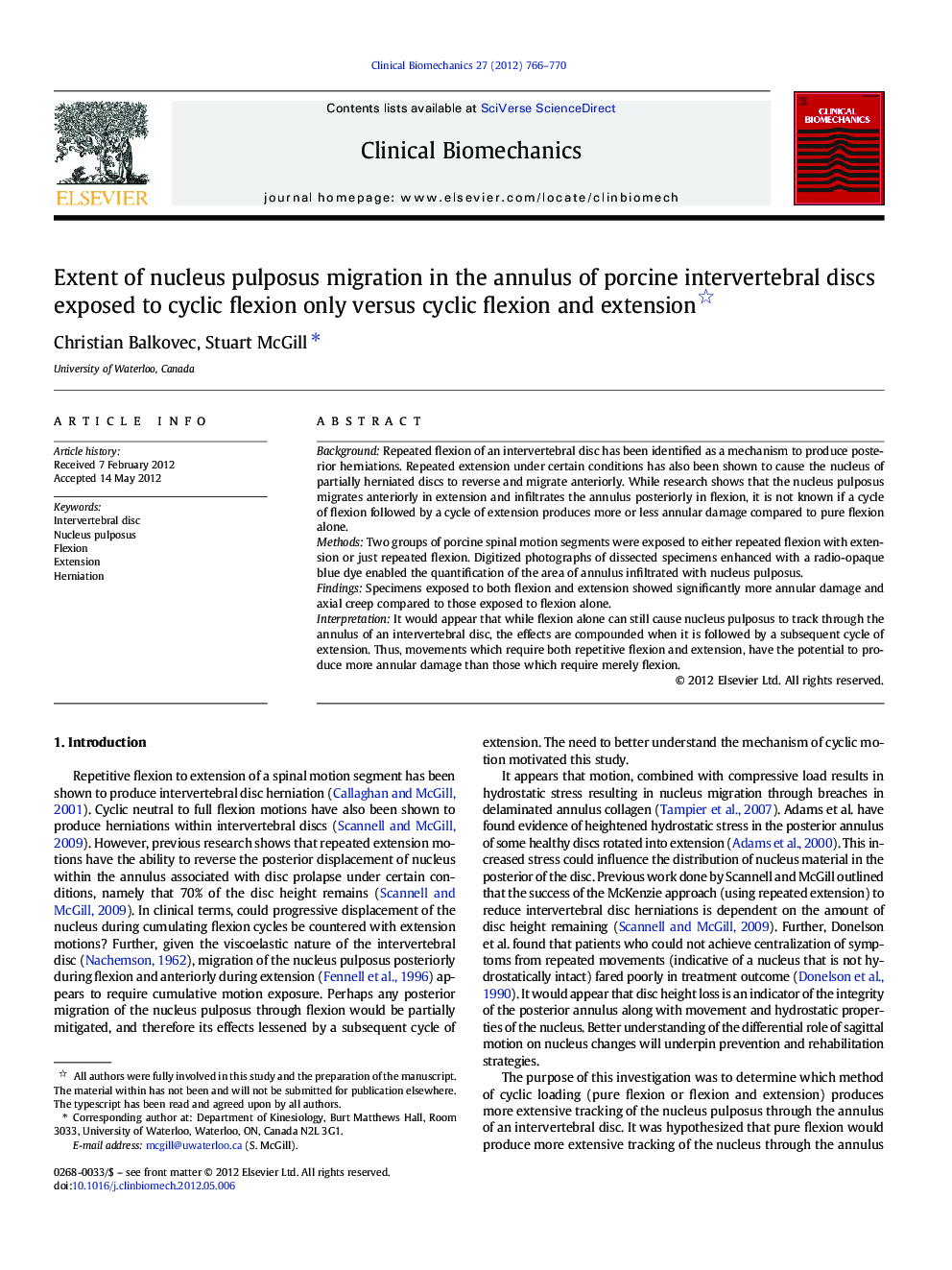| Article ID | Journal | Published Year | Pages | File Type |
|---|---|---|---|---|
| 6205150 | Clinical Biomechanics | 2012 | 5 Pages |
BackgroundRepeated flexion of an intervertebral disc has been identified as a mechanism to produce posterior herniations. Repeated extension under certain conditions has also been shown to cause the nucleus of partially herniated discs to reverse and migrate anteriorly. While research shows that the nucleus pulposus migrates anteriorly in extension and infiltrates the annulus posteriorly in flexion, it is not known if a cycle of flexion followed by a cycle of extension produces more or less annular damage compared to pure flexion alone.MethodsTwo groups of porcine spinal motion segments were exposed to either repeated flexion with extension or just repeated flexion. Digitized photographs of dissected specimens enhanced with a radio-opaque blue dye enabled the quantification of the area of annulus infiltrated with nucleus pulposus.FindingsSpecimens exposed to both flexion and extension showed significantly more annular damage and axial creep compared to those exposed to flexion alone.InterpretationIt would appear that while flexion alone can still cause nucleus pulposus to track through the annulus of an intervertebral disc, the effects are compounded when it is followed by a subsequent cycle of extension. Thus, movements which require both repetitive flexion and extension, have the potential to produce more annular damage than those which require merely flexion.
